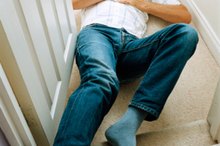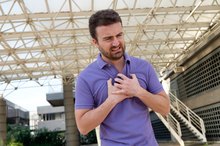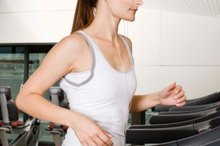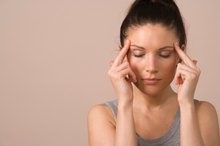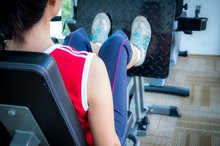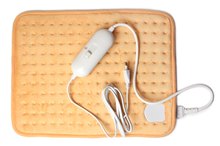What does fact checked mean?
At Healthfully, we strive to deliver objective content that is accurate and up-to-date. Our team periodically reviews articles in order to ensure content quality. The sources cited below consist of evidence from peer-reviewed journals, prominent medical organizations, academic associations, and government data.
The information contained on this site is for informational purposes only, and should not be used as a substitute for the advice of a professional health care provider. Please check with the appropriate physician regarding health questions and concerns. Although we strive to deliver accurate and up-to-date information, no guarantee to that effect is made.
My Left Side Hurts Like I've Been Running
People who engage in vigorous physical activity are often used to muscle soreness after a hard workout. However, sometimes pain develops even after a moderate workout or that seems unrelated to exercise. While most cases of left side pain are not a cause for serious medical concern, sudden, debilitating pain or pain that worsens requires prompt medical evaluation.
If you are experiencing serious medical symptoms, seek emergency treatment immediately.
Features
People with pain in the left side might notice additional symptoms such as difficulty breathing during physical activity or exercise, coughing with expectoration of mucus, numbness, squeezing pain or pressure in the chest or pain that spreads into the lower back, abdomen, left arm or left side of the jaw. The pain might worsen with exercise or when lying on your back or left side.
Causes
Side Pain After Exercise
Learn More
Pain in the left side that feels like muscle soreness that develops after running often results from a strained muscle in the rib cage 1. In addition, repetitive movements of the upper body, such as swimming strokes, throwing or lifting weights, on a regular basis can cause overuse injuries to muscles in the left side of the body. Asthma attacks and infections such as pneumonia, flu and bronchitis might also cause left side pain, especially when exercising or coughing. Stress and anxiety can also cause tightness, numbness and pain in the left side of the body 2.
Warning
Pain on the left side of the chest, especially when it is accompanied by additional symptoms such as sweating, nausea, dizziness, shortness of breath or feelings of panic or anxiety could indicate a heart attack. This is a life-threatening emergency. Anyone with these symptoms should immediately call 9-1-1 or another emergency number for urgent medical evaluation.
Treatments
Pain in the Right Breastbone
Learn More
Most muscle strains are treatable at home with compression, rest, ice and elevation of the affected area. Doctors might recommend using an over-the-counter pain reliever such as ibuprofen to reduce discomfort, especially before or after exercise. Left side pain resulting from an asthma attack often requires prescription medications to restore normal breathing functions and relax upper-body muscles. Emergency medical situations such as heart attack require immediate medical treatment at a hospital.
- Most muscle strains are treatable at home with compression, rest, ice and elevation of the affected area.
- Left side pain resulting from an asthma attack often requires prescription medications to restore normal breathing functions and relax upper-body muscles.
Prevention
Alternating forms of physical activity, such as playing baseball or swimming one day and walking the next can help prevent left side pain resulting from repetitive activities. Following a prescribed treatment program for conditions such as asthma can help prevent asthma attacks that cause left side pain. Following a healthy diet and maintaining a healthy body weight, along with quitting smoking can help reduce the risk of left side of the body pain resulting from a heart attack.
Related Articles
References
- National Library of Medicine: Rib Cage Pain
- American Academy of Family Physicians: Acute Chest Pain
- Roongruangchai J, Narongsak W, Plakornkul V, Viravud Y, Sripaoraya K, Roongruangchai K. Situs inversus totalis and ultrastructure of respiratory cilia: report of a cadaveric case. J Med Assoc Thai. 2012;95(1):132-8.
- Khandaker MH, Espinosa RE, Nishimura RA, et al. Pericardial disease: diagnosis and management. Mayo Clin Proc. 2010;85(6):572-93. doi:10.4065/mcp.2010.0046
- Lavorini F, Di bello V, De rimini ML, et al. Diagnosis and treatment of pulmonary embolism: a multidisciplinary approach. Multidiscip Respir Med. 2013;8(1):75. doi:10.1186/2049-6958-8-75
- Zarogoulidis P, Kioumis I, Pitsiou G, et al. Pneumothorax: from definition to diagnosis and treatment. J Thorac Dis. 2014;6(Suppl 4):S372-6. doi:10.3978/j.issn.2072-1439.2014.09.24
- Rao SS. Diagnosis and management of esophageal chest pain. Gastroenterol Hepatol (N Y). 2011;7(1):50-2.
- Proulx AM, Zryd TW. Costochondritis: diagnosis and treatment. Am Fam Physician. 2009;80(6):617-20.
- Huffman JC, Pollack MH, Stern TA. Panic Disorder and Chest Pain: Mechanisms, Morbidity, and Management. Prim Care Companion J Clin Psychiatry. 2002;4(2):54-62.
- Aroesty, J., and J. Kannam. Patient education: Chest pain (Beyond the Basics). UpToDate. Updated 08/27/18.
Resources
Writer Bio
Jessica Lietz has been writing about health-related topics since 2009. She has several years of experience in genetics research, survey design, analysis and epidemiology, working on both infectious and chronic diseases. Lietz holds a Master of Public Health in epidemiology from The Ohio State University.

